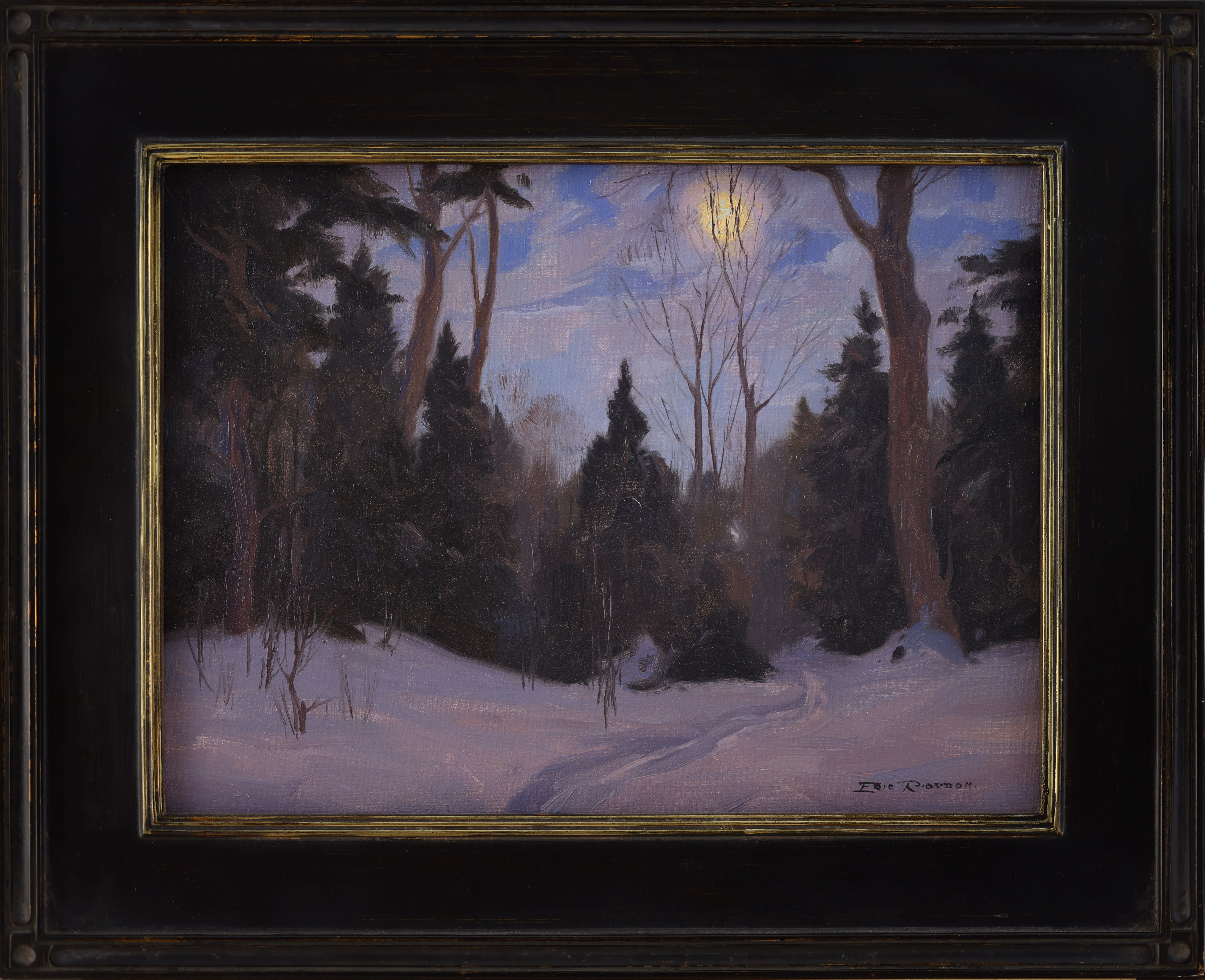John Eric Benson Riordon (December 5, 1906 - December 23, 1948) was born in St. Catharines, Ontario and his family moved to Montreal two years later. His early life was closely tied to the natural beauty of Lac Caché near Mont-Tremblant National Park, a place that would become his most cherished painting location.

Riordon's formal education spanned from 1916 to 1926, attending the esteemed Ashbury College in Ottawa and later McGill University in Montreal. His foray into the world of art began in earnest in 1928 at the Montreal Fine Arts Academy. Within a mere three years, his talent was recognized with two of his works featured at the Art Association of Montreal's annual exhibition.
Seeking further refinement of his skills, Riordon ventured to Paris in 1932, enrolling in the renowned L’Académie de La Grande Chaumière. His work gained international acclaim during this period being showcased at the Salon of Paris over the next two years.

Eric Riordon; January Afternoon, Mulet River
Riordon's style and skills were significantly honed during a three-month European tour. Upon his return to Montreal, he secured representation with the Continental Gallery. Riordon found himself drawn to the serene and captivating landscapes of the Laurentians. He spent his summers at the family cottage, nestled amid the natural wonders of the region. It was here that he fell in love with the unique charm of the Laurentian landscape, and this love would become a central theme in his work.

Riordon's life took a significant turn during the Second World War, when he joined the Royal Canadian Navy. His dedication and service led him to the rank of Lieutenant Commander in the Naval Reserve. After the war, Riordon decided to put down roots in the region he loved most. He married and built a home near Ste.-Adele, Quebec but sadly, Eric Riordon's life was tragically cut short from throat cancer at the age of 43.
 Eric Riordon; Rond-Point des Champs Elysees
Eric Riordon; Rond-Point des Champs Elysees
Despite having a far too short life, Eric Riordon's legacy lives on through his exceptional body of work, which encapsulates the enduring beauty of the Laurentians, particularly in the winter months. His paintings remain a testament to his artistic talent, his love for the landscape, and his ability to share that love with the world.




